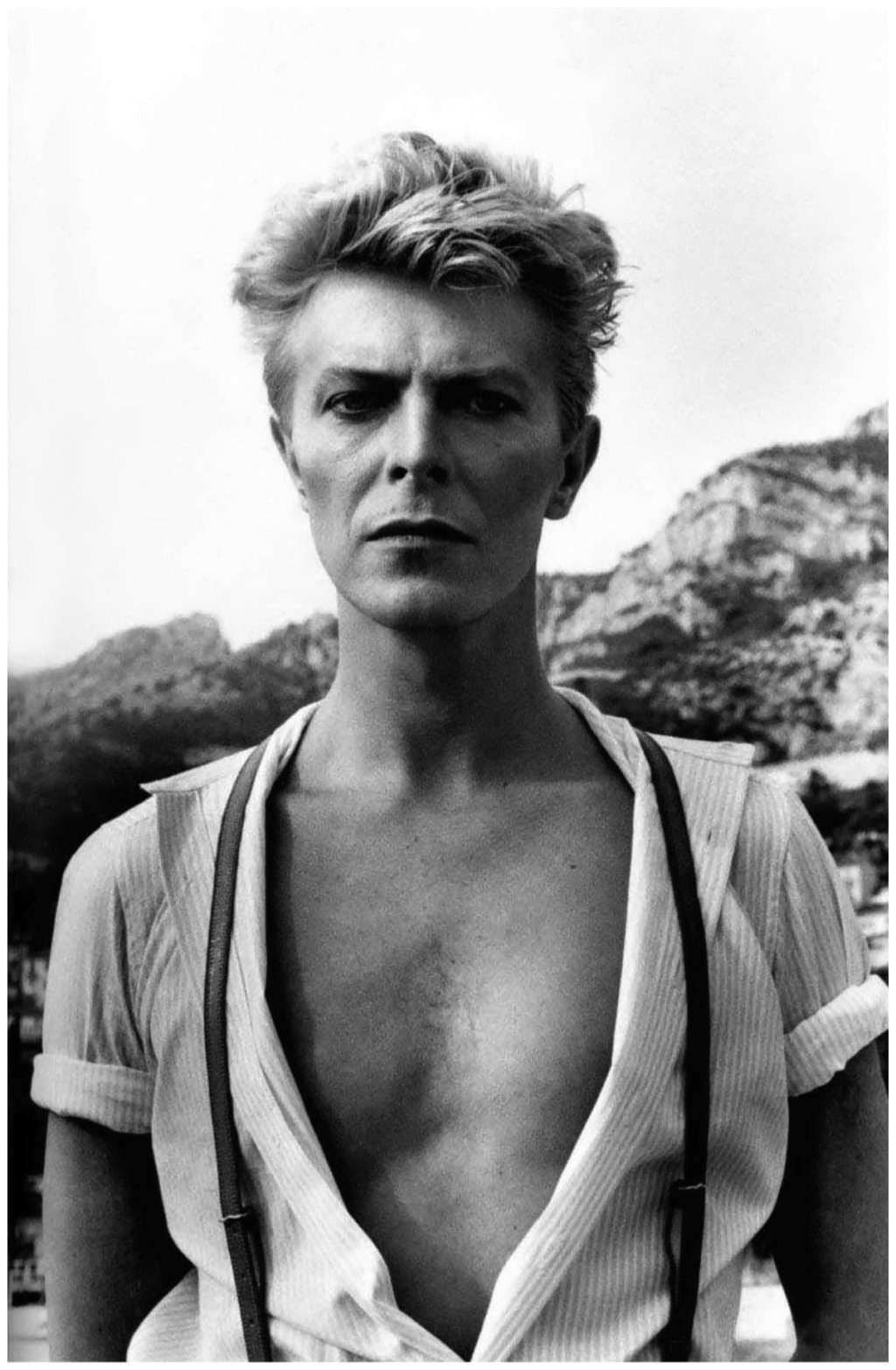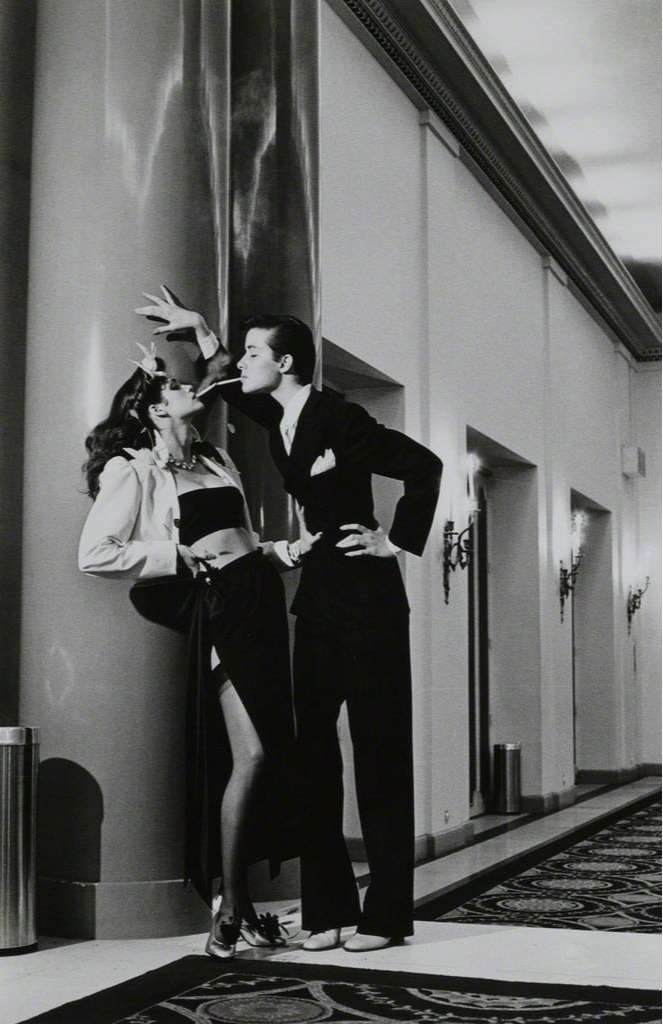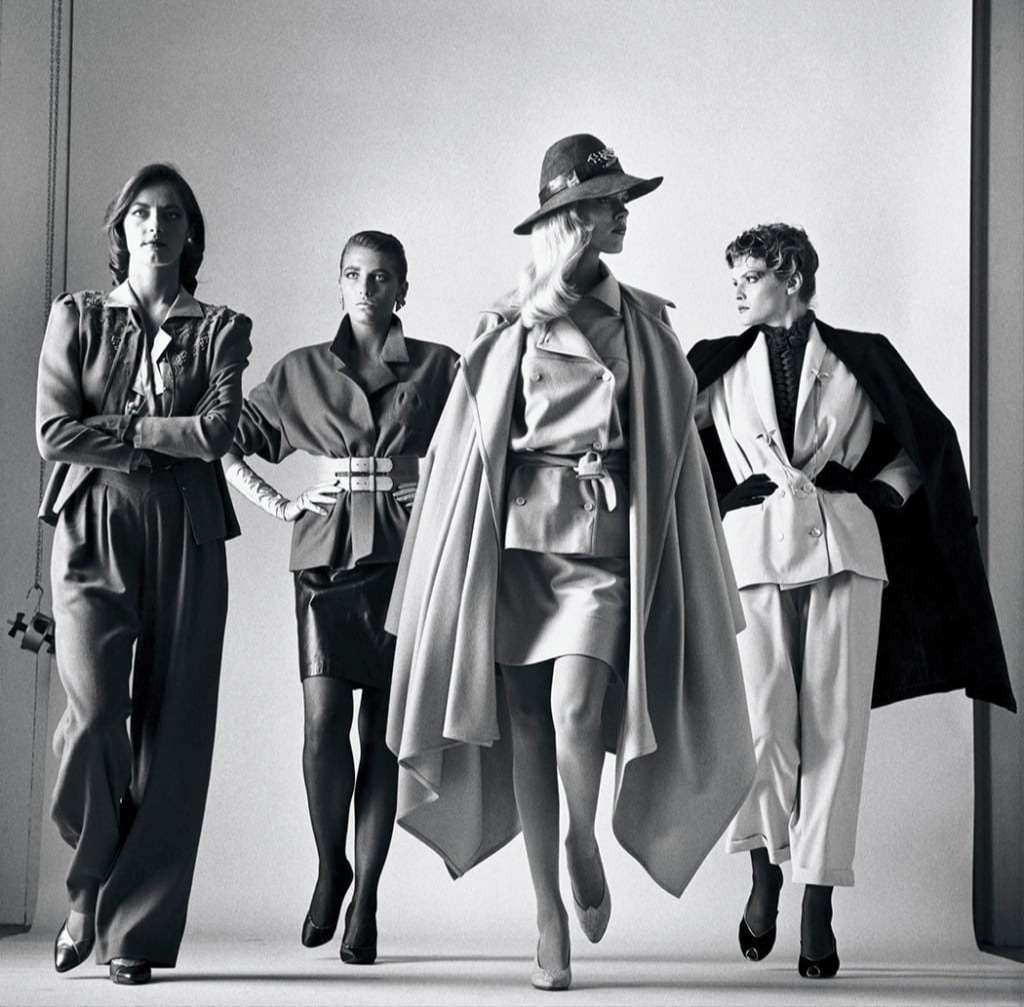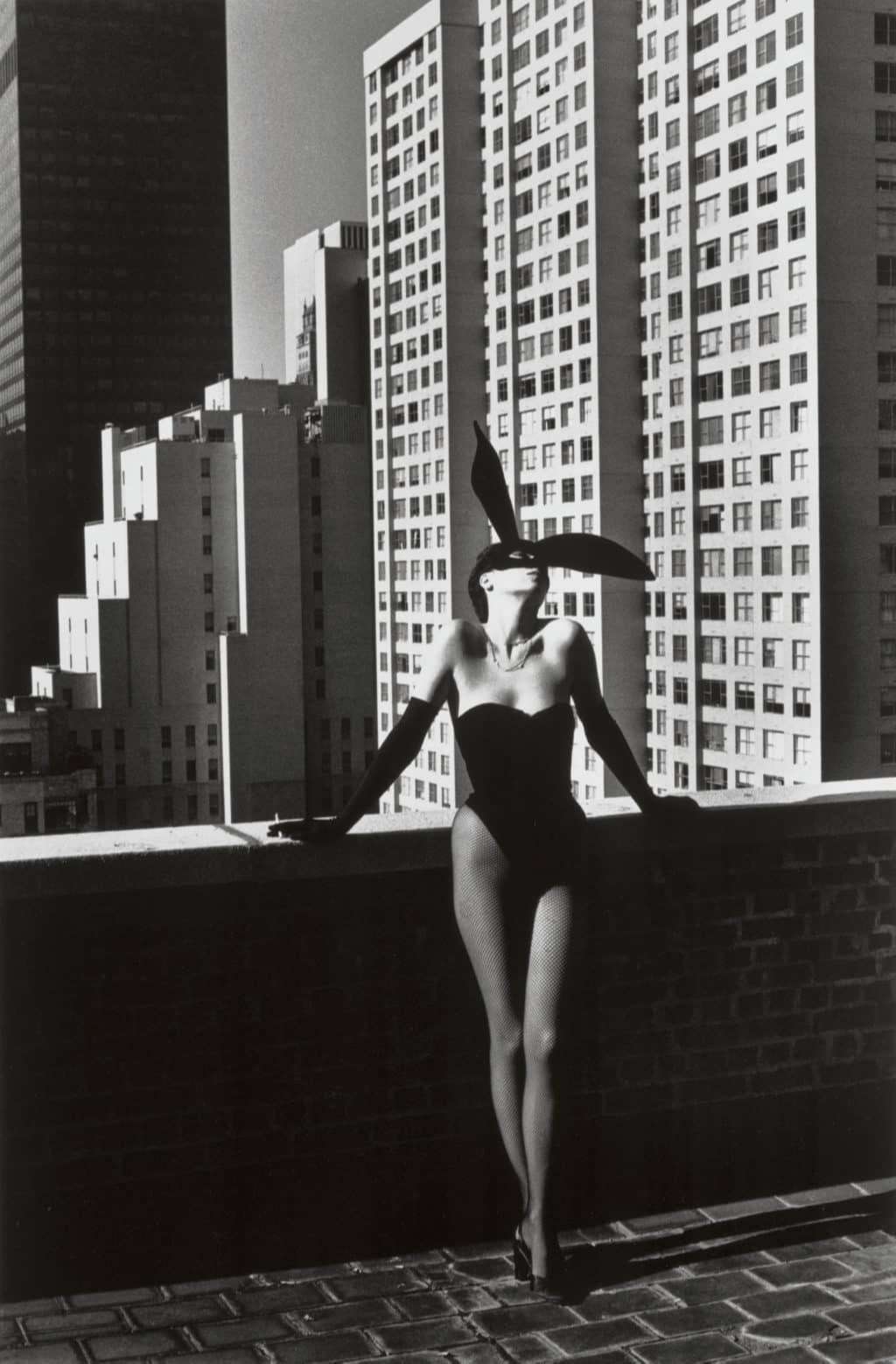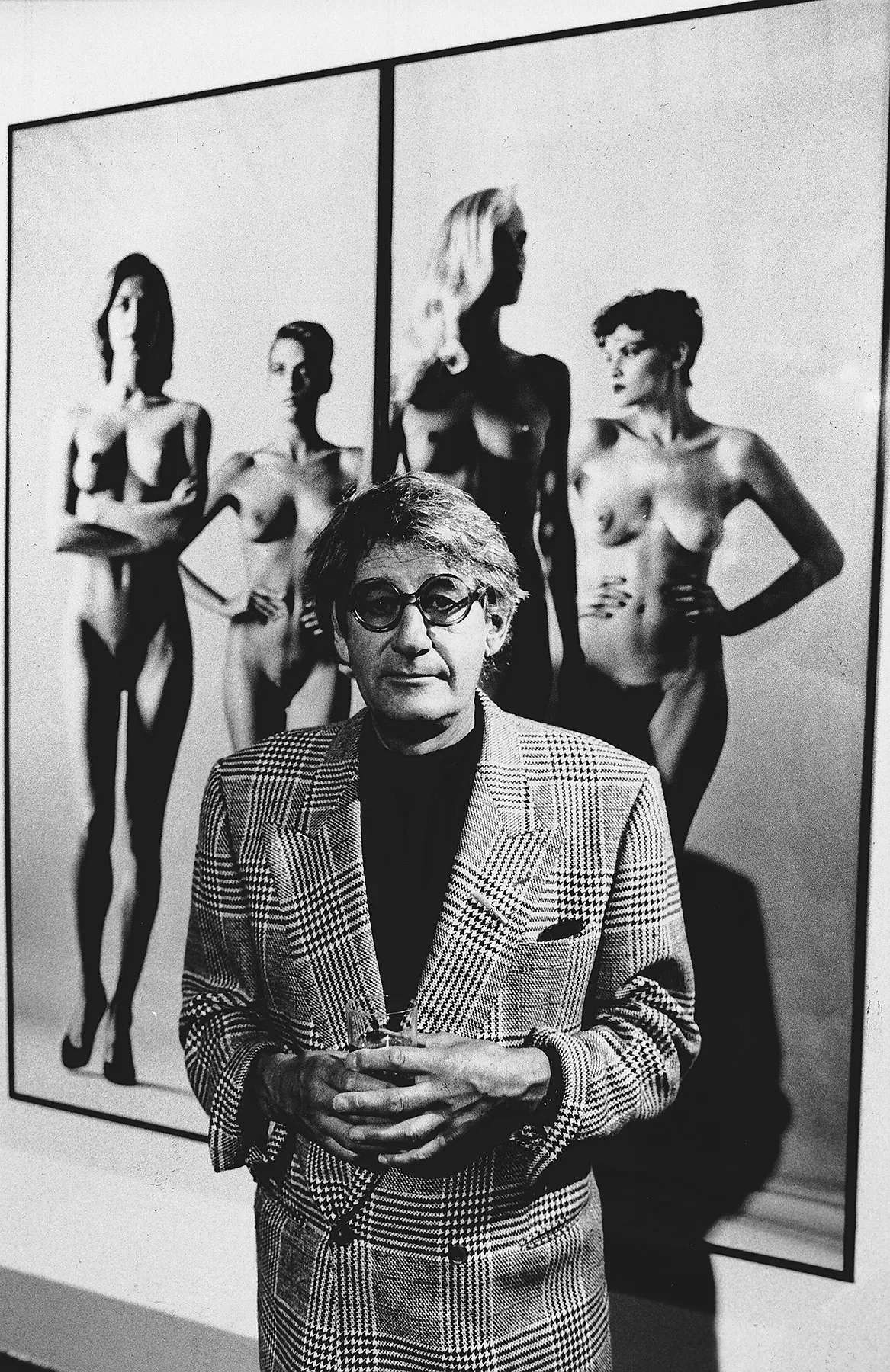
Helmut Newton
Buy original Helmut Newton artworks from ArtLife, including signed prints from across his career. Learn more about Helmut Newton life and work here.
Artwork
Biography
Helmut Newton—born Helmut Neustädter—was born in Berlin to a wealthy Jewish family in 1920. He attended the Heinrich von Treitschke Realgymnasium school and the American School in Berlin and first became interested in photography after buying his first camera at the age of 12. Four years later, Newton started working for the German fashion and portrait photographer Yva, whose style would heavily influence his own.
The increasingly oppressive regulations Jews faced as a result of the Nuremberg Laws forced Newton’s family to flee Germany in November 1938. The next month, after being issued a passport on account of turning 18, Newton tried to emigrate to China but instead ended up in Singapore, where he briefly worked as a photographer for the Straits Times.
In September 1940, Newton was detained by British authorities and sent to Australia. He was held at the Tatura internment camp in north-eastern Victoria until 1942, before enlisting in the Australian army as a truck driver. Once the war ended in 1945, he became a British subject and changed his name to Newton in 1946. Two years later, he married an Australian woman called June Brown, who subsequently became a successful photographer under the pseudonym Alice Springs.
Newton’s arrival in Australia also kickstarted his photography career. In 1946, he set up a studio in Melbourne and began working on fashion, theatre, and industrial photography. In May 1953, Newton shared his first exhibition with Wolfgang Sievers, called New Visions in Photography. He then went into partnership with Henry Talbot, a fellow German Jew émigré.
Newton’s growing reputation as a fashion photographer earned him an opportunity at Vogue magazine, which led to a year-long contract with British Vogue in 1957. However, he left London before the contract was up, moving to Paris to work for various French and German magazines. In March 1959, he returned to Melbourne to work for Vogue Australia.
Newton and his wife finally settled in Paris in 1961, where his images appeared in magazines like Vogue Paris and Harper’s Bazaar. It was during the 1960s that he began to really hone his distinctive style and began exploring the voyeuristic and sadomasochistic themes that would go on to define him.
A heart attack in 1970 left him unable to work and, for a while, it was unclear whether he would ever regain his energy and enthusiasm for photography. However, spurred on by his wife, Newton began to work on erotic picture stories for American adult magazines Oui Playboy. In 1980, he released his iconic Big Nudes series, considered by many to be his finest work. Throughout the 80s, he became noted for his celebrity portraits, photographing everyone from Andy Warhol, Madonna, David Bowie and even Margaret Thatcher.
The late stages of Newton’s career earned him a significantly greater level of recognition. In 1990, he was awarded the Grand Prix National de la Photographie in France, while in 1992 he received the Das Grosse Verdienstkreuz for services to German culture. He lived interchangeably between Los Angeles and Monte Carlo before his untimely death in 2004, following injuries sustained in a car accident.
Newton’s career was ignited by the financial security he gained in the early 1960s, as this allowed him to produce the kind of photography he wanted to, unshackled by the constraints imposed on him by those he worked for. From then onwards, his work combined the glamour and decadence of high-fashion with erotic voyeurism and sadomasochistic fetishism. Explaining what drew him to this subject matter, Newton told an interviewer: “I love vulgarity. I am attracted by bad taste—it is a lot more exciting than supposed good taste, which is nothing more than a standardised way of looking at things.”
Newton largely eschewed the studio, instead preferring to stage his models in grandiose mansions, opulent villas, or esteemed hotels. This helped him create an elaborate and elegant mise-en-scène and bring a journalistic feel to his work.
While Newton’s work has attracted some criticism for being misogynistic, the artist has argued that his models used his photography to channel their own sexuality. By portraying them as independent and in control, his images can be seen as empowering rather than demeaning. This approach transformed the art of fashion photography from something safe and conventional to a much more provocative form of expression.
Some of Newton’s main influences include erotica, cinema, journalism, and art, helping to blur the lines between high and low brow forms. His love of cinema is most clearly encapsulated in his preference for black and white film, while his desire to convey human emotion in his photographs reflected his journalistic background.As well as the acclaim Newton received during his lifetime, his work remains relevant today. A major retrospective of his photography took place in Amsterdam in 2016, while in 2018 his work was featured in the The Getty Museum’s Icons of Style exhibition. The Helmut Newton Foundation, set up in 2003, continues to cement his legacy by regularly exhibiting his and his wife’s work.
